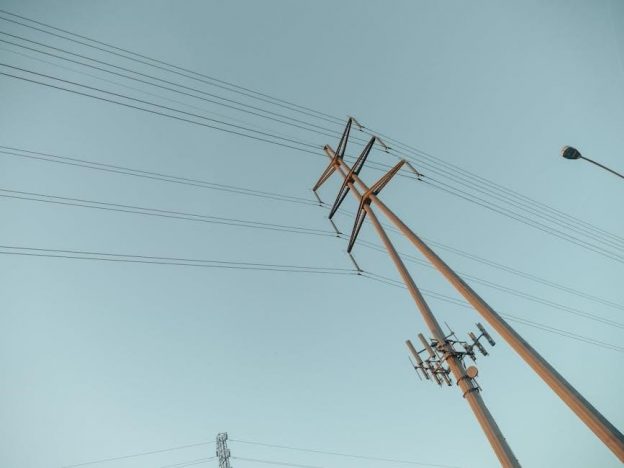Off-grid solar systems offer sustainable energy independence‚ harnessing sunlight for power. They are ideal for remote locations‚ promoting eco-friendly living and reduced reliance on traditional grids always.
What is an Off-Grid Solar System?
An off-grid solar system is a self-contained renewable energy solution designed to generate and store electricity independently of the traditional power grid. It typically includes solar panels‚ a charge controller‚ a battery bank‚ and an inverter/charger. These components work together to capture sunlight‚ regulate energy flow‚ store excess power‚ and convert it into usable electricity for homes‚ businesses‚ or other applications. Unlike grid-tied systems‚ off-grid systems do not rely on external power sources‚ making them ideal for remote areas or locations with frequent outages. A wiring diagram is essential for proper installation‚ ensuring all components are safely and efficiently connected to maximize energy production and reliability.
Why Use an Off-Grid Solar System?
An off-grid solar system is a reliable and sustainable solution for energy independence‚ especially in remote areas without access to the traditional power grid. It helps reduce reliance on fossil fuels‚ lowering carbon emissions and promoting eco-friendly living. Off-grid systems are cost-effective in the long run‚ as they eliminate monthly utility bills and provide a stable power source during outages. They are ideal for homes‚ cabins‚ or businesses in isolated locations‚ offering a secure and renewable energy supply. Additionally‚ off-grid solar systems can be tailored to specific power needs‚ ensuring efficient energy use and minimal environmental impact. This makes them a practical choice for those seeking energy autonomy and sustainability.
Importance of a Wiring Diagram in Off-Grid Solar Systems
A wiring diagram is essential for installing and maintaining an off-grid solar system. It serves as a blueprint‚ illustrating how components like solar panels‚ charge controllers‚ battery banks‚ and inverters connect. This clarity prevents electrical hazards and ensures the system operates efficiently. Proper wiring is critical for safety‚ preventing shocks and fires by guiding correct connections and grounding. The diagram aids in planning‚ helping choose appropriate wire sizes‚ connectors‚ and fuses to minimize voltage drop and energy loss. It simplifies troubleshooting by allowing quick identification of issues. Additionally‚ it facilitates future maintenance and upgrades by providing a clear guide for modifications. A wiring diagram also acts as a reference for anyone working on the system‚ ensuring consistency and safety. Ultimately‚ it is crucial for a safe‚ efficient‚ and long-lasting solar setup.
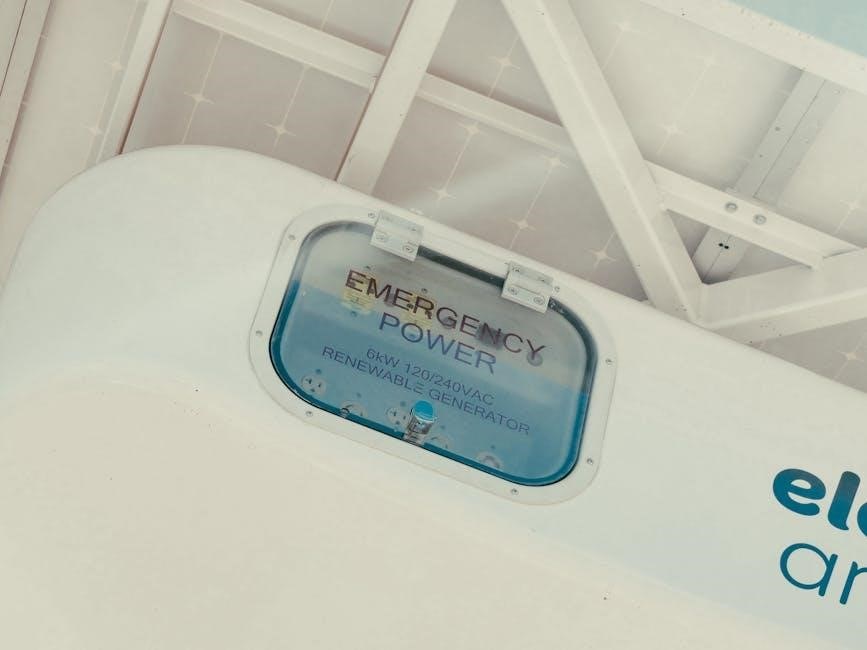
Understanding the Components of an Off-Grid Solar System
Off-grid solar systems consist of solar panels‚ charge controllers‚ battery banks‚ inverters‚ and wiring harnesses. These components work together to generate‚ store‚ and distribute renewable energy efficiently.
Solar Panels: Types and Configurations
Solar panels are the heart of an off-grid system‚ converting sunlight into electricity. They come in types like monocrystalline‚ polycrystalline‚ and thin-film‚ each offering different efficiencies and costs. Monocrystalline panels are the most efficient but also the most expensive‚ while polycrystalline panels are more budget-friendly but slightly less efficient. Thin-film panels are flexible and lightweight‚ ideal for unique installations. Panels can be configured in series or parallel to achieve desired voltage and current levels. Series connections increase voltage‚ while parallel connections boost current. Proper configuration ensures optimal energy production and compatibility with other system components‚ such as charge controllers and inverters. A wiring diagram is essential to visualize and execute these connections accurately.
Charge Controllers: MPPT vs. PWM
Charge controllers are essential for regulating energy flow from solar panels to batteries‚ preventing overcharging and ensuring efficient energy storage. There are two primary types: MPPT (Maximum Power Point Tracking) and PWM (Pulse Width Modulation). MPPT controllers are more advanced‚ optimizing energy harvest by converting excess voltage into usable current‚ making them ideal for larger systems or those with variable conditions. PWM controllers are simpler and more cost-effective‚ suitable for smaller systems with basic needs. Choosing the right type depends on system size‚ budget‚ and energy requirements. A wiring diagram is crucial for proper installation‚ ensuring compatibility and safe operation of these critical components in your off-grid solar setup.
Battery Bank: Deep Cycle Batteries and Configurations
A battery bank is the heart of an off-grid solar system‚ storing excess energy for later use. Deep cycle batteries are ideal due to their ability to handle repeated charging and discharging cycles. Configurations vary‚ with common setups including series‚ parallel‚ or a combination of both to achieve desired voltage and capacity. A 12V‚ 24V‚ or 48V system is typically used‚ depending on power needs. Proper sizing ensures reliable energy storage‚ while correct wiring‚ as shown in a wiring diagram‚ is essential for safety and efficiency. Regular maintenance‚ such as checking connections and voltage‚ extends battery life and ensures optimal system performance. A well-designed battery bank is crucial for off-grid energy independence.
Inverter/Charger: Pure Sine Wave vs. Modified Sine Wave
An inverter/charger is a critical component in an off-grid solar system‚ converting stored DC power to AC for household use. Pure sine wave inverters produce clean‚ stable electricity‚ ideal for sensitive electronics like laptops‚ TVs‚ and appliances. Modified sine wave inverters‚ while more affordable‚ may cause interference or damage to delicate devices. Choosing the right type depends on your power needs and appliance compatibility. The wiring diagram will show how to connect the inverter/charger to the battery bank and solar array‚ ensuring proper configuration. Pure sine wave inverters are generally more efficient and reliable for off-grid systems‚ while modified sine wave inverters are suitable for basic applications. Proper installation is essential for safety and performance.
Mounting Structures: Roof and Ground Mount Options
MOUNTING STRUCTURES ARE CRUCIAL FOR OPTIMIZING SOLAR PANEL PERFORMANCE IN OFF-GRID SYSTEMS. Roof mounts are ideal for space-saving installations‚ utilizing existing roof space‚ while ground mounts offer flexibility in placement and alignment. Roof mounting requires careful assessment of structural integrity and angle to ensure maximum sunlight exposure. Ground mounts‚ on the other hand‚ allow for easier maintenance and adjustment. Both options require durable materials to withstand weather conditions. A wiring diagram will illustrate how to connect panels to the system‚ ensuring proper electrical flow. Choosing the right mount depends on site conditions‚ energy needs‚ and installation practicality. Proper installation ensures stability and efficiency‚ maximizing energy production for off-grid independence.

Wiring Harness: Cables‚ Connectors‚ and Fuses
A proper wiring harness is essential for ensuring safe and efficient energy flow in an off-grid solar system. High-quality cables and connectors are used to link solar panels‚ charge controllers‚ batteries‚ and inverters. These components must be durable and weather-resistant to withstand outdoor conditions. Fuses and circuit breakers are integrated into the wiring harness to protect the system from overcurrent and short circuits. A well-designed wiring diagram simplifies installation and troubleshooting‚ ensuring all connections are secure and properly routed. Correct wiring practices are critical to prevent energy loss‚ overheating‚ and potential safety hazards. By selecting the right cables‚ connectors‚ and protective devices‚ you can ensure a reliable and long-lasting off-grid solar system.
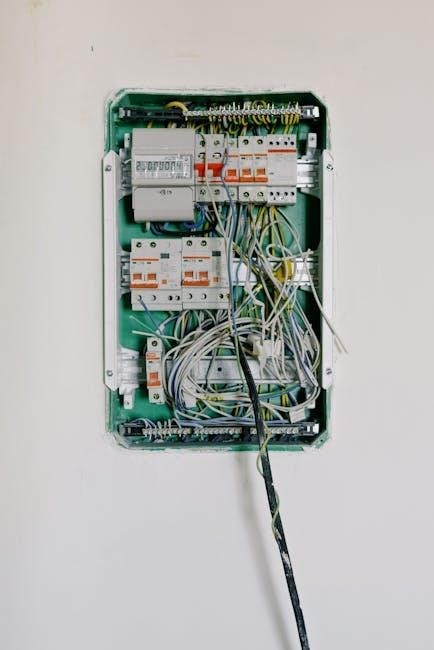
Designing Your Off-Grid Solar System
Designing an off-grid solar system involves assessing power needs‚ selecting components‚ and creating a wiring diagram. Ensure energy efficiency‚ safety‚ and reliability for your renewable energy setup always.
Determining Your Power Needs: Load Calculation
Determining your power needs is the first step in designing an off-grid solar system. Start by calculating your daily energy usage in watt-hours (Wh) or kilowatt-hours (kWh). List all appliances‚ their power ratings‚ and hours of use. Consider lighting‚ refrigeration‚ and electronics. Add a buffer for unexpected loads to avoid undersizing your system. Tools like solar calculators or spreadsheets can simplify this process. Accurate load calculation ensures your system meets your energy demands efficiently. Remember‚ oversizing can waste resources‚ while undersizing may lead to power shortages. Plan carefully to balance performance and cost‚ ensuring reliability for your off-grid lifestyle.
Sizing Your Solar Array: Number of Panels and Wattage
After determining your power needs‚ the next step is sizing your solar array. Calculate the total wattage required by summing the power demands of all appliances. Consider your location’s sunlight hours to estimate the energy generation needed. Typically‚ a higher wattage panel may be more efficient‚ but the number of panels depends on space and budget. Aim for a balance between wattage and quantity to meet your energy needs without oversizing. Tools like solar calculators can help optimize panel selection. Ensure your array aligns with your battery bank capacity and system voltage for a seamless energy supply. Proper sizing ensures reliability and efficiency in your off-grid setup.
Selecting the Right Inverter and Charge Controller
Selecting the right inverter and charge controller is crucial for optimizing your off-grid solar system. The inverter converts stored DC power to usable AC‚ while the charge controller regulates energy flow to the battery bank. Choose an inverter with sufficient capacity to handle your maximum power demand‚ ensuring it supports your system’s voltage (12V‚ 24V‚ or 48V). For charge controllers‚ MPPT (Maximum Power Point Tracking) models are more efficient than PWM‚ especially for larger systems. Consider pure sine wave inverters for sensitive electronics. Proper sizing ensures efficient energy use and prevents system overload. Always refer to wiring diagrams to ensure compatibility and safe connections. Brand reliability and scalability are key for long-term performance.
Choosing the Appropriate Battery Bank Size
Choosing the right battery bank size is essential for ensuring reliable energy storage in your off-grid solar system. Start by calculating your daily energy needs and consider depth of discharge (DOD) to avoid overusing your batteries. Deep cycle batteries are ideal‚ as they handle frequent charging and discharging. For larger systems‚ configure batteries in series or parallel to meet voltage and capacity requirements. A 12V‚ 24V‚ or 48V setup is common‚ depending on your system design. Proper sizing ensures consistent power supply and prevents underperformance. Always refer to wiring diagrams to ensure compatibility and safe connections. Regular maintenance and monitoring are key to extending battery life and system efficiency. Brand reliability and scalability are also critical for long-term performance and energy security.
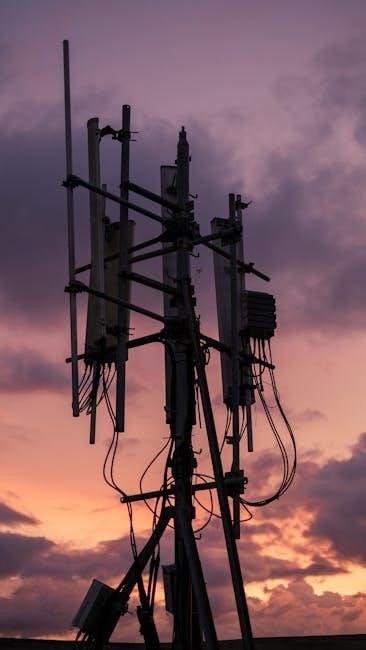
Designing the System Voltage: 12V‚ 24V‚ or 48V
Designing the system voltage for your off-grid solar setup involves selecting between 12V‚ 24V‚ or 48V‚ each offering unique advantages; A 12V system is ideal for small-scale applications‚ such as RVs or tiny homes‚ due to its simplicity and lower costs. However‚ it may not be efficient for larger power needs. A 24V system strikes a balance‚ providing higher efficiency while remaining manageable for medium-sized systems. For larger setups requiring more power‚ a 48V system is recommended as it reduces current requirements‚ minimizing energy loss and enhancing overall efficiency. Always ensure compatibility across all components‚ including solar panels‚ charge controllers‚ batteries‚ and inverters‚ to maintain optimal performance and safety.
Creating a Wiring Diagram for Your System
A wiring diagram is essential for designing and installing an off-grid solar system. It provides a clear visual representation of how components like solar panels‚ batteries‚ charge controllers‚ and inverters connect. A well-detailed diagram ensures safety‚ efficiency‚ and proper functionality. Start by identifying the system voltage (12V‚ 24V‚ or 48V) and map out connections‚ including fuses‚ circuit breakers‚ and grounding points. Use standardized symbols for components and label each wire clearly. DIY enthusiasts can find templates online or use tools like cleversolarpower.com for custom diagrams. Always follow electrical codes and best practices to avoid hazards. A wiring diagram acts as a blueprint‚ simplifying installation and future maintenance.
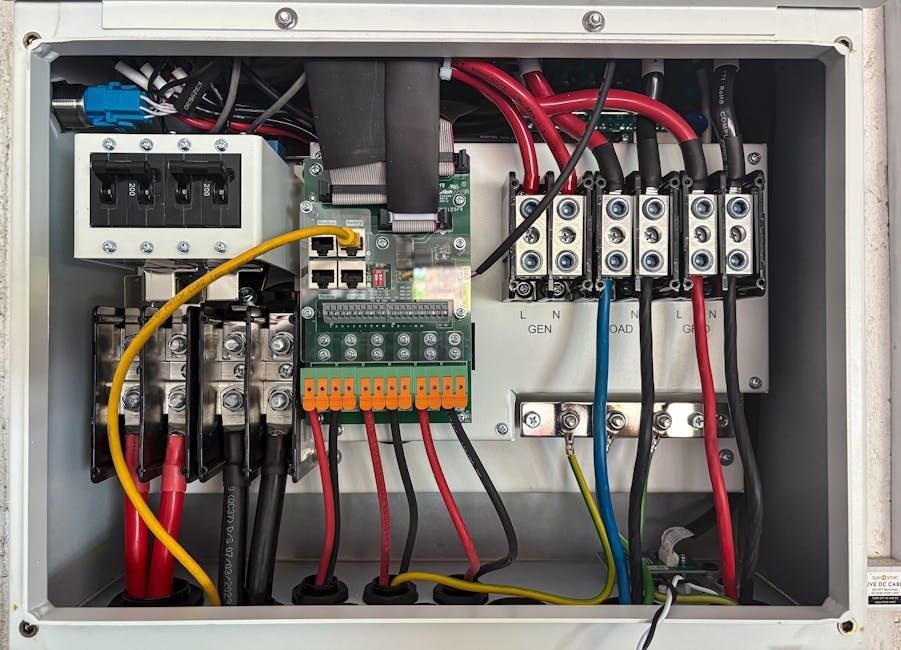
Installation Steps for an Off-Grid Solar System
Installing an off-grid solar system involves assessing the site‚ mounting panels‚ setting up the battery bank‚ and connecting components. Use a wiring diagram to ensure proper connections and safety. Visit cleversolarpower.com for detailed guides;
Preparing the Site: Assessing Sunlight and Space
Preparing the site is the first step in installing an off-grid solar system. Assess sunlight patterns to ensure optimal energy production. Use a wiring diagram to plan panel placement and avoid obstructions. Measure sunlight hours and ensure the area is south-facing for maximum efficiency. Clear any trees or structures that could block sunlight. Evaluate space for mounting structures‚ whether roof or ground-mounted. Ensure the area is level and stable for installation. Refer to guides like those from cleversolarpower.com for detailed site preparation tips. Proper planning ensures your system performs efficiently and safely.
Installing Solar Panels: Mounting and Alignment
Installing solar panels requires precise mounting and alignment to maximize energy production. Use durable mounting structures‚ such as aluminum frames‚ to secure panels. Ensure the mounting system is sturdy and can withstand weather conditions. Align panels to face south (or north in the southern hemisphere) for optimal sunlight capture. Adjust the tilt angle according to your location’s latitude for maximum efficiency. Use a wiring diagram to plan panel placement and connections. Refer to guides like those from cleversolarpower.com for detailed installation tips. Properly secure panels with bolts and ensure electrical connections are safe and weatherproof for long-term performance.
Setting Up the Battery Bank: Location and Safety
Properly setting up your battery bank is crucial for system performance and safety. Locate the battery bank in a well-ventilated‚ dry area away from living spaces to prevent hydrogen gas accumulation. Ensure the batteries are secured to prevent movement and potential damage. Use a wiring diagram to connect batteries in series or parallel‚ depending on your system voltage (12V‚ 24V‚ or 48V). Always follow safety guidelines‚ such as wearing protective gear and ensuring proper ventilation. Refer to guides like those from cleversolarpower.com for detailed setup instructions. Regularly inspect connections to avoid corrosion and ensure long-term reliability.
Connecting the Charge Controller: Configuration and Settings
Connecting the charge controller is a critical step in your off-grid solar system setup. Begin by mounting the controller near the battery bank to minimize power loss. Use a wiring diagram to ensure correct connections between the solar panels‚ battery‚ and controller. Configure settings like voltage thresholds‚ charging modes‚ and load control based on your system requirements. For MPPT controllers‚ optimize settings for maximum power point tracking efficiency. Refer to resources like cleversolarpower.com for detailed configuration guides. Always follow safety precautions and double-check connections to avoid system damage or inefficiency. Proper settings ensure optimal energy harvesting and battery longevity.
Installing the Inverter/Charger: Placement and Wiring
When installing the inverter/charger‚ placement is key for efficiency and safety. Locate it near the battery bank to minimize power loss during transfer. Use a wiring diagram to ensure correct connections between the inverter‚ battery‚ and solar array. Secure the unit in a well-ventilated area to prevent overheating. Connect the positive and negative terminals carefully‚ following the diagram to avoid shorts. Set the inverter/charger to the correct voltage and mode (e.g.‚ 12V‚ 24V‚ or 48V) to match your system. Refer to resources like cleversolarpower.com for detailed wiring guides. Proper installation ensures safe and efficient energy flow from solar to storage to appliances.
Wiring the Entire System: Panel to Battery to Inverter
Wiring an off-grid solar system involves connecting solar panels to the charge controller‚ then to the battery bank‚ and finally to the inverter. Use a wiring diagram to ensure correct connections‚ starting with the solar array. Connect the panels in series or parallel based on your system voltage. The charge controller regulates energy flow to the battery‚ preventing overcharging. From the battery‚ wires run to the inverter‚ which converts stored DC power to AC for appliances. Proper grounding and fuses are essential for safety. Refer to resources like cleversolarpower.com for detailed diagrams. Correct wiring ensures efficient energy flow and system reliability.
Testing the System: Ensuring Everything Works Correctly
Testing your off-grid solar system is crucial to ensure all components function properly. Start by checking the solar panels’ voltage and current output using a multimeter. Verify that the charge controller is correctly regulating power to the battery bank. Monitor the battery voltage during charging and discharging cycles. Test the inverter’s output to confirm it provides stable AC power. Ensure all connections are secure and meet the wiring diagram specifications. Check for any error codes or alarms on the charge controller or inverter. Perform a full system test under varying conditions‚ such as sunlight and nighttime‚ to assess performance. Proper testing ensures safety‚ efficiency‚ and reliability of your off-grid solar system.
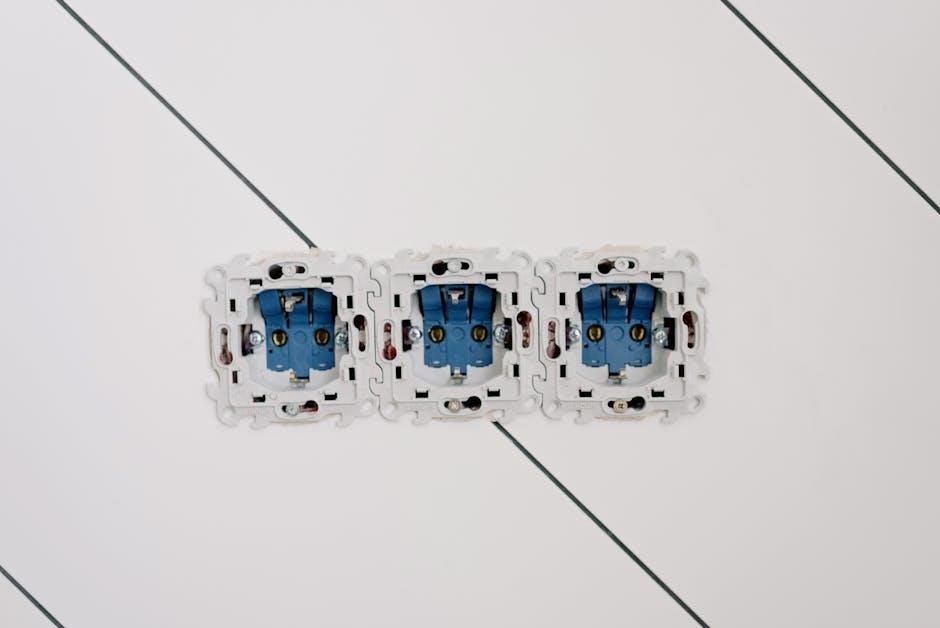
Safety Considerations and Best Practices
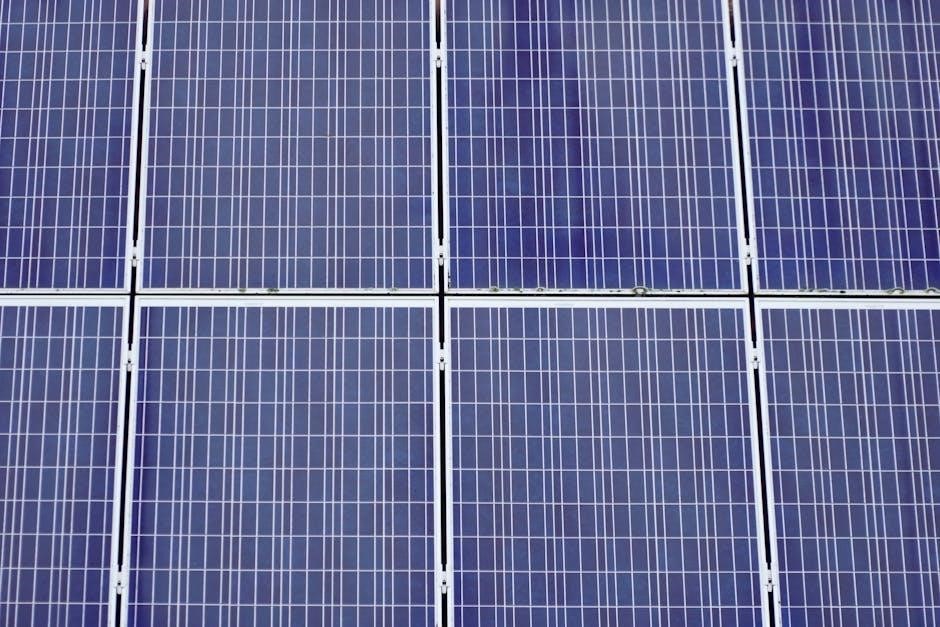
Ensure proper grounding and use circuit breakers to prevent electrical hazards. Regularly inspect wiring and components to maintain system efficiency and safety‚ following your wiring diagram guidelines.
Safety Precautions: Working with Electricity and Batteries
Safety is paramount when working with off-grid solar systems. Always disconnect power sources before performing maintenance or repairs. Wear protective gear like gloves and safety glasses to prevent injuries; Ensure proper ventilation when handling batteries‚ as they can emit hazardous gases. Avoid overcharging batteries‚ as this can cause overheating or explosions. Use circuit breakers and fuses to protect against electrical overloads. Grounding your system correctly is essential to prevent shock hazards. Follow your wiring diagram carefully to ensure all connections are secure and meet safety standards. Regularly inspect cables and components for damage or wear. Never touch electrical components with wet hands or while standing in water. Keep a fire extinguisher nearby when working with batteries or electrical systems.
Proper Grounding Techniques for Off-Grid Systems
Proper grounding is essential for the safety and efficiency of off-grid solar systems. A well-grounded system protects against electrical shocks‚ equipment damage‚ and fire hazards. Start by installing a copper grounding rod deep into the earth‚ ensuring good conductivity. Connect all system components‚ including solar panels‚ inverters‚ and battery banks‚ to this grounding point using thick‚ uninsulated copper wire. Regularly inspect the grounding system for corrosion or damage‚ as poor connections can compromise safety. Always follow your wiring diagram to ensure all grounding paths are correctly implemented. Proper grounding also ensures stable system performance and prevents voltage fluctuations. Never skip grounding steps‚ as it is critical for both functionality and safety in off-grid setups.
Using Fuses and Circuit Breakers: Protecting Your System
Fuses and circuit breakers are critical for protecting your off-grid solar system from overcurrent and short circuits. Install fuses between solar panels‚ batteries‚ and inverters to safeguard each component. Use circuit breakers to disconnect power during faults‚ preventing damage and ensuring safety. Choose the correct rating for your system‚ as specified in your wiring diagram. Always place fuses and breakers in accessible locations for easy inspection and replacement. Regularly test these devices to ensure they function properly. Protecting your system with fuses and circuit breakers is essential for preventing fires‚ equipment damage‚ and electrical hazards. Never overlook these components‚ as they are vital for system reliability and user safety in off-grid setups.
Regular Maintenance and Inspection: Extending System Life
Regular maintenance and inspection are essential to ensure the longevity and efficiency of your off-grid solar system. Start by checking solar panels for dirt‚ damage‚ or misalignment‚ cleaning them as needed. Inspect wiring and connections for signs of wear‚ corrosion‚ or pests. Monitor battery health by testing voltage and charge levels‚ ensuring proper storage and ventilation. Review your wiring diagram to verify all components are functioning correctly. Keep inverters and charge controllers updated with the latest settings. Schedule annual professional inspections to address potential issues early. By maintaining your system‚ you can prevent failures‚ optimize performance‚ and extend the lifespan of your off-grid solar setup‚ ensuring reliable energy production for years to come.
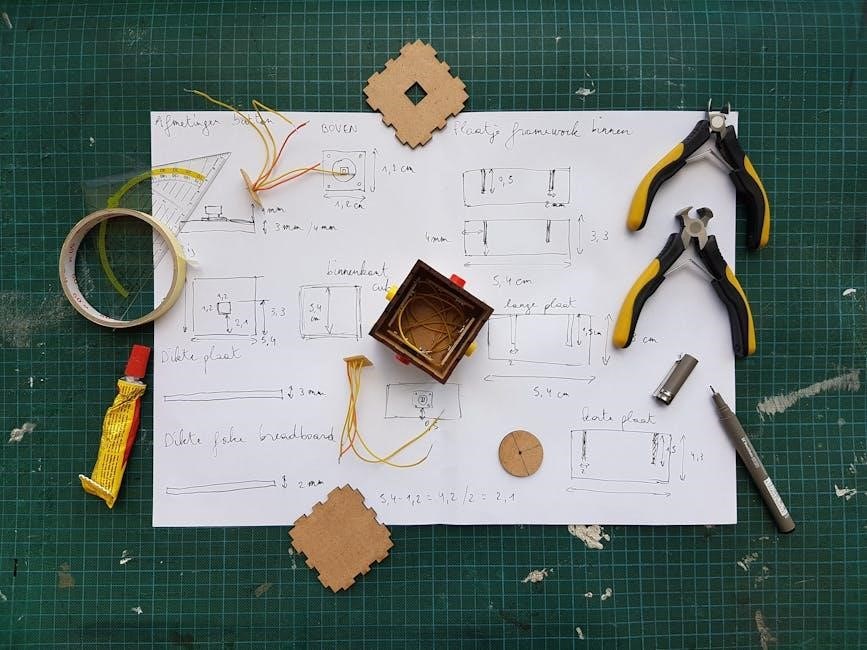
Troubleshooting Common Issues
Identify issues like low power or overcharging using your wiring diagram. Check connections‚ panels‚ and battery health. Ensure components are functioning correctly for optimal system performance always.
Identifying Common Problems: Low Power‚ Overcharging‚ etc.
Common issues in off-grid solar systems include low power output‚ overcharging‚ and faulty connections. Low power can result from shaded panels‚ incorrect wiring‚ or insufficient panel size. Overcharging occurs when the charge controller fails to regulate battery charging‚ potentially damaging the battery bank. A wiring diagram is essential for diagnosing these issues‚ as it provides a visual layout of the system. By referencing the diagram‚ users can identify misconnected components or improper configurations. Regular inspections of cables‚ connectors‚ and fuses are crucial for preventing power loss. Additionally‚ monitoring system voltage and current ensures batteries are charging and discharging correctly. Addressing these issues promptly prevents long-term damage and maintains system efficiency. Always refer to the wiring diagram for troubleshooting guidance.
Diagnosing Issues with Your Wiring Diagram
A wiring diagram is a crucial tool for diagnosing issues in an off-grid solar system. It provides a clear visual representation of how components like solar panels‚ batteries‚ and inverters are connected. Common problems‚ such as low power output or overcharging‚ can often be traced to faulty wiring or incorrect configurations. By referencing the wiring diagram‚ users can identify mismatches in voltage or current ratings‚ loose connections‚ or improperly sized cables. The diagram also helps pinpoint where components like fuses or circuit breakers may have failed. Regularly cross-referencing the system’s actual setup with the wiring diagram ensures accurate troubleshooting and minimizes downtime. This step-by-step approach saves time and prevents costly repairs by addressing root causes efficiently.
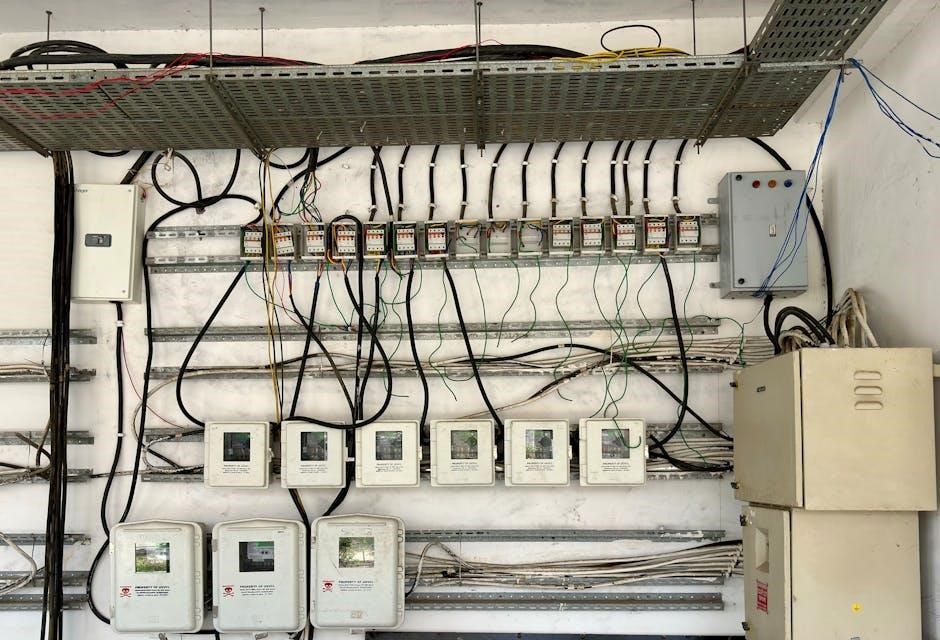
Repairing Faulty Connections and Components
Repairing faulty connections and components in an off-grid solar system requires careful analysis using the wiring diagram. Start by identifying the problematic area‚ such as a loose connection or a damaged cable. Use the diagram to trace the flow of electricity and pinpoint the exact location of the issue. Replace any faulty components‚ ensuring they match the system’s voltage and power specifications. Clean corroded terminals and tighten connections to restore proper conductivity. Always disconnect the power source before making repairs to avoid electrical hazards. Regularly updating the wiring diagram after repairs helps maintain system accuracy and prevents future issues. This systematic approach ensures reliability and extends the lifespan of your off-grid solar setup.
Embark on your off-grid journey with confidence‚ using detailed wiring diagrams and expert guides. Visit resources like SunSPOT calculator and EcoFlow’s guide for comprehensive support and inspiration.
Final Thoughts on Off-Grid Solar Systems
Off-grid solar systems empower individuals and communities to achieve energy independence‚ offering a sustainable and reliable power solution. By harnessing renewable energy‚ these systems reduce environmental impact while providing resilience against grid outages. Wiring diagrams are essential for safe and efficient installations‚ ensuring all components work harmoniously. Proper planning‚ from load calculation to component selection‚ is crucial for system performance. Resources like SunSPOT calculators and EcoFlow guides simplify the process‚ making off-grid solar accessible to everyone. Embrace this clean energy transition and enjoy the freedom to power your life sustainably‚ no matter the location.
Where to Find Additional Resources and Support
For those seeking detailed guidance on off-grid solar systems‚ numerous resources are available online. Websites like EXPLORIST.life offer comprehensive DIY wiring diagrams for campers‚ vans‚ and RVs. Tools such as the SunSPOT solar calculator help estimate suitable system sizes for homes or businesses. Platforms like EcoFlow provide step-by-step guides for building solar systems‚ including component selection and setup. Additionally‚ forums and communities dedicated to renewable energy share practical advice and troubleshooting tips. For visual learners‚ free diagrams from Clever Solar Power simplify complex wiring layouts. These resources ensure that both beginners and experienced users can design and install efficient off-grid systems with confidence.
Encouragement to Start Your Off-Grid Journey
Embarking on an off-grid solar journey is a rewarding step toward energy independence and sustainability. With the right tools and resources‚ such as detailed wiring diagrams and guides‚ you can confidently design and install your system. Start by assessing your power needs and exploring available components. Online communities‚ tutorials‚ and calculators like the SunSPOT solar calculator provide invaluable support. Remember‚ transitioning to off-grid energy is achievable and beneficial‚ offering long-term savings and a reduced environmental footprint. Take the first step today and embrace the freedom of renewable energy!
